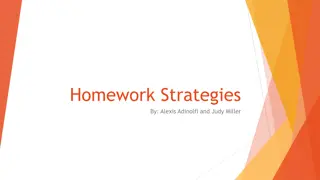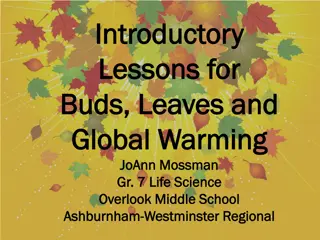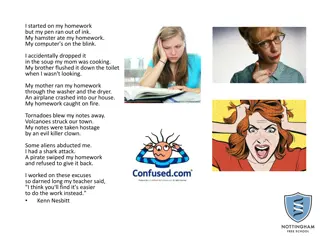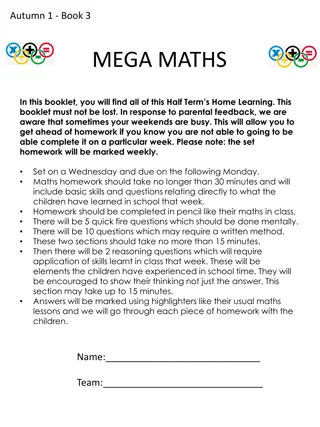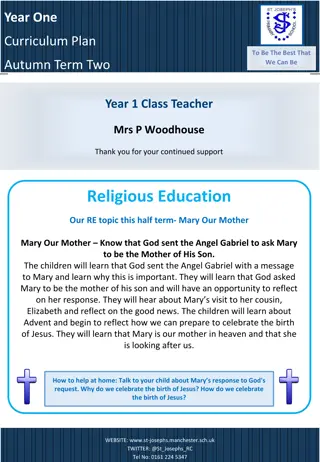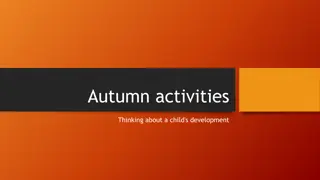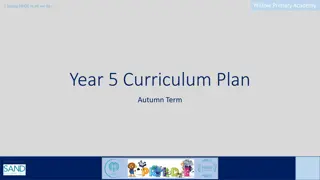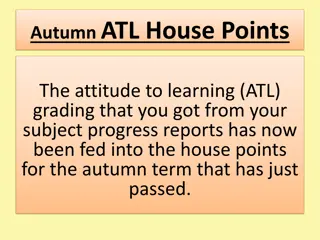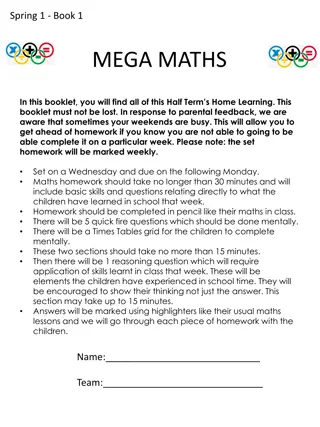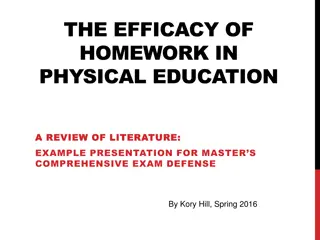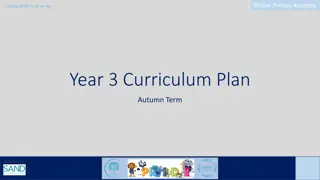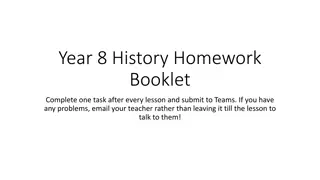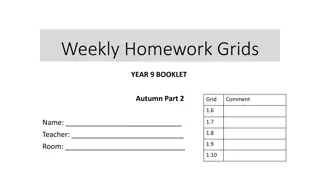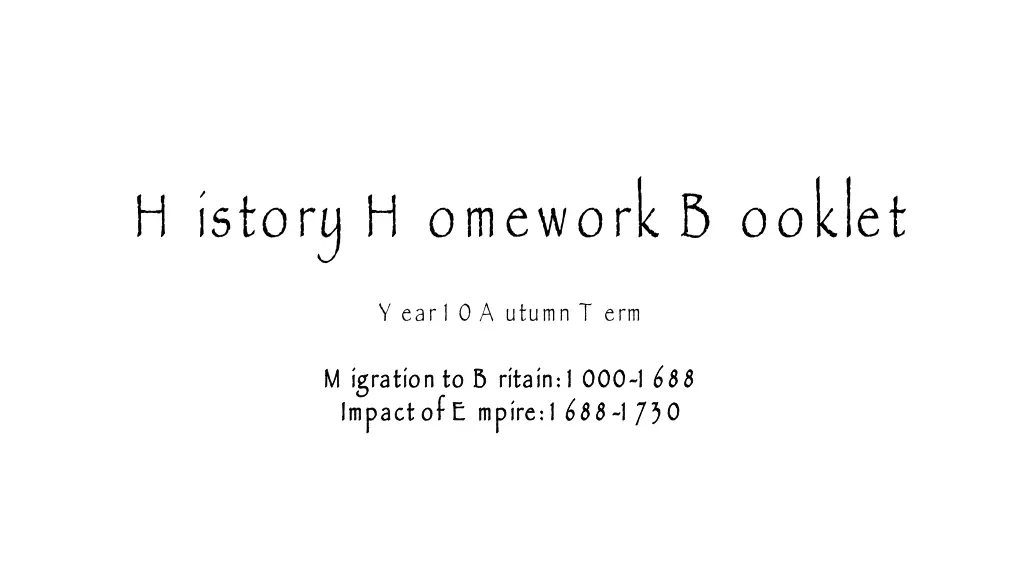
Homework Booklet for British History Study
Explore the migration and impact of the Empire in Britain from 1000 to 1730 through a detailed homework booklet. Get weekly tasks, study key historical events such as 1066, and engage with quizzes to enhance your knowledge. Don't forget to seek help from your teacher if needed.
Download Presentation

Please find below an Image/Link to download the presentation.
The content on the website is provided AS IS for your information and personal use only. It may not be sold, licensed, or shared on other websites without obtaining consent from the author. If you encounter any issues during the download, it is possible that the publisher has removed the file from their server.
You are allowed to download the files provided on this website for personal or commercial use, subject to the condition that they are used lawfully. All files are the property of their respective owners.
The content on the website is provided AS IS for your information and personal use only. It may not be sold, licensed, or shared on other websites without obtaining consent from the author.
E N D
Presentation Transcript
H istory H omework B ooklet Y ear 1 0 A utumn T erm M igration to B ritain: 1 000 Impact of E mpire: 1 6 8 8 M igration to B ritain: 1 000- -1 6 8 8 Impact of E mpire: 1 6 8 8 - -1 7 3 0 1 6 8 8 1 7 3 0
Homework advice You will receive a new homework booklet each term. Each week, you will be asked to complete some tasks usually, each task will follow on from what you did in lesson. You should spend about an hour on your homework every week (this will vary slightly depending on the tasks!) If you are stuck on anything, your teacher will be happy to help. Make sure you get going with the tasks as soon as you can, leaving plenty of time to ask for help at school before the deadline
Task 1 Task 1- - Introduction lesson Introduction lesson 1. Make sure you know your British history timeline dates. Use the quizlet link below to complete some of the activities to learn the dates. When you are feeling confident, complete a test on quizlet and post a screenshot of the completed test to the assignment on Teams. https://quizlet.com/_a1d7uc?x=1qqt&i=t6bni 2. Use the quizlet link below to test yourself again on the key words. Post a screenshot of your completed test to the assignment on Teams. https://quizlet.com/_8h6kde?x=1qqt&i=t6bni
Task 2: There are two things to complete this week 2a and 2b (one after each lesson).
Task 2a: What happened in 1066? Task 2a: What happened in 1066? Read the information on the next pages and use it to create a flow diagram of the events mentioned. Your flow chart should have 3 events (one for each paragraph) & each event should have one or two sentences of description. 1) 2) 3)
Key people: Edward the Confessor, King of England. Edward the Confessor, King of England. William, Duke of Normandy (in modern William, Duke of Normandy (in modern- -day France) Harold Godwinson, a powerful Earl of Wessex, right Harold Godwinson, a powerful Earl of Wessex, right- -hand man to the King day France) hand man to the King 1) William Duke of Normandy was Edward the Confessor s cousin and in the 1050s he visited his cousin in England, claiming shortly afterwards that Edward had promised him the English throne. In 1064, Harold Godwinson was shipwrecked on the Norman coast and was captured by one of William's Lords. According to Norman sources, he then promised William the English crown as a price for freedom. When Edward died in 1066 however, the Witan elected Harold King of England, who remembered no such promise. Thus, in 1066, there were at least two claimants to the English crown. e.g. 1) There were two men who thought they should be king of England: 2) 3)
2) On 14 October 1066 William and Harold's forces met at Hastings. The Norman cavalry and Archers needed to break through the Anglo-Saxon heavy infantry's shield wall. This took the entire day and Harold's men almost held, yet fatigue set in, and the wall eventually broke. Harold Godwinson died and by Christmas 1066, William was crowned king in London 3) Resistance to the Normans persisted, however, from 1067 to 1069, in the form of small rebellions among the Anglo-Saxons. In 1069 the Danish Viking Swen Estrithson sent a fleet to York that allied with the rebels and began a more serious revolt, occupying the region. William's response was brutal. Taking on the unusual winter campaign, he marched north, with Norman forces burning all peasant villages and crops, creating an artificial famine. Thousands died, and the peasants fled. As Norman forces moved through each region, William built castles near the urban centres to watch and control the population. This was known as the harrying of the north".
Task 2b Task 2b Who rebelled against the Normans? Who rebelled against the Normans? Read the information attached and answer these questions in full sentences in your book (it should make sense when you come to revise!): 1) What happened during the Harrying of the North ? 2) Where was Hereward s rebellion and how did the Normans stop it? 3) What was the murdrum? 4) What does all this resistance suggest about Anglo-Saxon acceptance of Norman rule? 5) Why did all the rebellions ultimately fail?
Resistance to Norman rule continued in England, Scotland and Wales for many years. Some of the English nobles joined an unsuccessful invasion of England led by King Sweyn of Denmark in 1069. Others fled to Scotland. King William was forced to crush resistance up and down the country, and he laid waste to much of northern England in order to end the constant rebellions. His soldiers even put salt in the soil of the north to stop crops growing. People died of starvation: this was known as the Harrying of the North. Nevertheless, resistance continued from the Silvatici Norman resistance fighters of the forests. The most famous rebel is probably Hereward, the English landholder who rose up against the Normans in East Anglia. When the Normans fought back he then withdrew to the Isle of Ely until the monks in Ely betrayed him and told the Normans how to get across the water. Silvatici or green men the anti-
It became so dangerous for the Normans that they reintroduced murdrum which was a special law dating from the time of the Vikings (the English word murder is derived from it.) If a Norman was assassinated, a collective fine was imposed on all those living in the area unless the murderer was caught within five days. In view of the strength and length of the English resistance to the Norman Conquest, why did it fail? A vital element was King William's determination and immense energy that saw him going from one end of the country to the other, fighting the flames of resistance and stamping on the smoldering embers of resentment. Another important element was that, once an area had been secured, castles were raised to keep the locals in check. But the key element was that the viable leadership of any English resistance was effectively neutralised when King Harold was killed at the Battle of Hastings. There was no king, and therefore no leadership or heart in the remaining English. Without real leadership, no English army could take the field. That gave William time to recover, take London and Winchester and force the Witan to accept his rule. But it did take until 1075 until William felt confident in his control of England. Slowly the English and Normans came together through the necessity of living side by side and also through marriage. With many of the rank and file Normans, and their French colleagues, being men of small worth, they had little option, but to mix in with their English neighbours.
Task 3: How accepted were the Jewish Task 3: How accepted were the Jewish population in England from 1066 population in England from 1066- -1290? 1290? Write a detailed, well-explained paragraph answering this question. You should have an overall argument (although you may want to consider change over time). Your argument should be backed up by specific events and people from today s lesson. How accepted were the Jewish population in England from 1066-1290?
Task 4 (there are two things to do this week)
Task 4a Task 4a - - Who were the aliens of the Middle Who were the aliens of the Middle Ages? Ages? -Read the following article. It is from the BBC History magazine. 1) Answer this question: Why was the poll tax introduced in 1440? 2) Using the Meet the aliens section, write down one piece of evidence which shows that medieval aliens were welcomed or accepted and one piece of evidence which shows that they were not.
1440 alien tax In 1440, the English parliament imposed a new tax on resident foreigners. Immigrants had paid taxes before this time the difference was simply that aliens were now to be a special category. The motivation was about finding new funds to help fight the Hundred Years War. The new tax was also introduced to help the government control immigration more tightly. Taking a census of resident foreigners could be a first step to greater controls at a time when Englishmen were concerned that aliens were getting a better economic deal, and were worried about national security. For modern historians, however, it provides an amazingly detailed survey of the geographical distribution, numbers, social status and occupations of foreigners living and working in England in 1440. It also gives us a tantalising glimpse of the human interactions between the native-born and the alien residents of the realm. While the largest number of those identified by place of origin in 1440 came from Scotland, Ireland and the areas directly linked to England by sea routes across the Channel and the North Sea, there were also significant numbers of people from Iberia and Italy and a small number from the eastern Mediterranean. We know from other evidence that there were north Africans and Middle Easterners in England in the Middle Ages. A husband and wife in London were labelled as coming from Inde , which could mean anywhere east of Jerusalem. The fact that their names, Benedict and Antonia, were Christian suggests that, in most cases, original ethnicity was hidden as they were given new names on arrival to England.
Meet the aliens The Irish spinner The Irish spinner: Alice Spynner, an Irish woman living and working in England, was assessed for the tax on resident aliens at Narborough in Leicestershire in 1440. Alice s occupation is evident from her surname. She was a spinner of wool, a job that was vital to the prosperity of the emergent English cloth industry. Many of Alice s compatriots made their way into south- western and north-western England, though fewer Irish people are found in the east Midlands. She provides a reminder of the importance of women in England s late medieval economy; indeed, her own trade made the word spinster a synonym for the single, independent woman. The Swedish student The Swedish student: Benedict Nicoll is one of the few people specifically identified in the tax records of 1440 as coming from Sweden. He and five others, including a Magnus and an Olaf, are described as staying with the University of Cambridge. Medieval seats of higher learning were always international in their membership and influence, but those who were full members of the universities of Oxford and Cambridge generally enjoyed exemption from taxation. Whatever Benedict s status and purpose in Cambridge, he was evidently only a temporary resident, for he had disappeared from the record by the time the second instalment of the 1440 tax was collected. The Dutch artist: The Dutch artist: John Danyell was from Holland, in the modern Netherlands, and appeared in England in 1440 as a painter living in the city of Lincoln. The occupation of painter had the same ambiguity in the 15th century as it does today: it could mean a house-painter, or a maker of fine art. John s presence in one of the most important cathedral cities of England is a vital clue to the patronage of artists from the Low Countries and of their influence on the northern Renaissance. The Italian trader: The Italian trader: Alexander Plaustrell, or Palestrelli, was a prominent Italian merchant living in London in the mid-15th century. Originally from Piacenza, he had trading connections across northern Italy, including in Lucca and Genoa. His house was in the Board Street area of London. In 1456, at a moment of high tension, he was physically assaulted in an affray at Cheapside, and the episode set off a series of attacks on Italians across the city. It provides us with one of many examples of the tensions between native Londoners and their international business rivals, as well as showing the readiness with which London mobs could target the foreigners in their midst.
Task 4b: How welcome were the aliens of the Task 4b: How welcome were the aliens of the Middle Ages? Middle Ages? Using the notes you took in class, write a paragraph in answer to: To what extent were aliens accepted into English society in the Middle Ages? Make sure your answer is balanced (tells two sides of the story) and that you have an overall conclusion.
Task 5: Using the revision checklist on Teams or on Task 5: Using the revision checklist on Teams or on the website, ensure you have a flashcard or revision the website, ensure you have a flashcard or revision resource for every topic we have studied so far. resource for every topic we have studied so far. Make sure you bring your flashcards or revision resource to lesson to show your teacher. It could also be a Kahoot or quiz or timeline for example but it should be something that you can use to test yourself. You can also find the revision checklist here: Y10 Revision checklists.docx
Task 6 (there are two things to do this week)
Task 6a: Test yourself using your Task 6a: Test yourself using your flashcards or quizzes, add to them flashcards or quizzes, add to them based on the work from the last based on the work from the last week, then have a go at the practice week, then have a go at the practice questions on the following slide. questions on the following slide. .
Task 6b: Practice questions Task 6b: Practice questions 1) Describe how the government has controlled migrants, 1066-1500. (4 marks: remember, describe two ways; point, description, point, description.) 2) Explain two consequences of migration for England, 1000-1500. (8 marks: 2 PEEL paragraphs) 3) Explain why migrants arrived in Britain, 1500-1700. (8 marks: 2 PEEL paragraphs)
Task 7 (there are 2 things to do this week)
Task 7a The Glorious Revolution Write definitions for the following key terms/ Events and people. Try and do as much from memory as possible! James II William of Orange & Mary Hanoverian Kings Glorious Revolution 1688 British Isles Catholic Protestant Battle of Boyne
Task 7b Ireland after 1691 Using work from your most recent lesson lesson, write a summary of the Irish Penal Laws (1695-1728). How did would they affect Irish Catholics? What would their consequences be for Protestants. If you missed the lesson, have a look at the image on the next slide. _____________________________________________________________________________________ _____________________________________________________________________________________ _____________________________________________________________________________________ _____________________________________________________________________________________ _____________________________________________________________________________________ _____________________________________________________________________________________ _____________________________________________________________________________________ _____________________________________________________________________________________ _____________________________________________________________________________________ _____________________________________________________________________________________ _____________________________________________________________________________________ _____________________________________________________________________________________ _____________________________________________________________________________________ _____________________________________________________________________________________ _____________________________________________________________________________________ _____________________________
Task 8 (there are two things to do this week)
Task 8a The creation of Great Britain Look carefully through your notes and answer the following exam style question: Explain why Scotland signed the Act of Union with England in 1707. (10 Marks) Hint 2 points, fully explained, linked back to the question, with evidence. Two separate paragraphs Give specific examples! One reason why Scotland signed that Act of Union was
Task 8b What were the consequences of the Act of Union? Watch this bbc bitesize video: https://www.bbc.co.uk/bitesize/guides/zgxfr82/video Then complete this table aim to write at least 3 impacts in each column using the video. Positive impacts of the Act of Union for Scotland Negative impacts of the Act of Union for Scotland
Task 9 Task 9 Create a web diagram connecting these events: - Bank of England (1694) - Nine Years War (1688-1697) - Early expansion of England s Empire - EIC set up (1600) - Glorious Revolution (1688) - Growing power of Parliament and the middle classes (merchants, traders, bankers etc.). Make links between them and explain on the lines how they are connected.
Task 10 The creation and expansion of Great Britain Make a timeline like the one on the following page and mark on these events, with one sentence summarizing what they are: - The Glorious Revolution - The Jacobite rebellion - Massacre of Glencoe - Darien Scheme - Acts of Union - South Sea Bubble - Bank of England created - Creation of East India Company - Creation of Royal Africa Company - Treaty of Utrecht When plotted, colour code them according to whether they are: Creation of Great Britain Great Britain s influence in Europe Great Britain s influence in the wider world
Task 10 The creation and expansion of Great Britain 1750 1700 1650 1600
Task 11: Using the revision checklist, ensure you Task 11: Using the revision checklist, ensure you have a flashcard or revision resource for every topic have a flashcard or revision resource for every topic we have studied so far as part of the Impact of we have studied so far as part of the Impact of Empire study. Empire study. Make sure you bring your flashcards or revision resource to lesson to show your teacher. It could also be a Kahoot or quiz or timeline for example but it should be something that you can use to test yourself. You can find the checklist here: Y10 Revision checklists.docx
Task 12 (there are two things to do this week)
Task 12a: Update your flashcards to include some on Task 12a: Update your flashcards to include some on the most recent week of work. Check them against the most recent week of work. Check them against the revision checklist on the website. You should now the revision checklist on the website. You should now have a flashcard on everything on the Impact of have a flashcard on everything on the Impact of Empire revision checklist. Empire revision checklist. Make sure you bring your flashcards or revision resource to lesson to show your teacher. It could also be a Kahoot or quiz or timeline for example but it should be something that you can use to test yourself. Once you have a full set of flashcards, test yourself! You can find the checklist here: Y10 Revision checklists.docx
Task 12b: Practice Questions 1) Explain how England increased its power over Ireland and Scotland in this period (10 marks). 2) Explain the impact of the growing empire on Britain s society and culture (10 marks). Remember, each answer needs two paragraphs that are clearly focused on the question. Use topic sentences at the beginning that use the key words in the question and link back to the question at the end!


